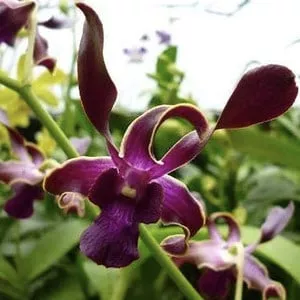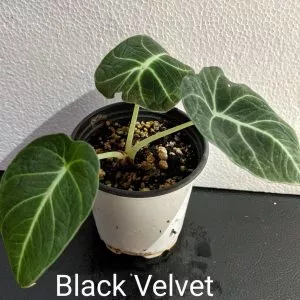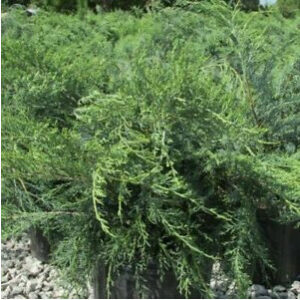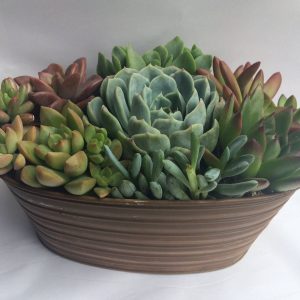No products in the cart.
Table of Contents
Did you know that this beauty was misconceived as a part of Monstera varieties because of its luscious dark-green leaves?
However, they are not. It has a rugged, rough stem, which distinguishes it from Monsteras. Many people enjoy these vines because of the distinctive display of blue colors in their leaves. It makes them ideal as ornamental elements, especially in rooms with bluish tones.
This beautiful plant is native to the island of Cebu, Philippines which has a local name “tibatib”. Cebu blue pothos is a fast-growing vine, invasive plant.
And if your home/apartment has that tone, this beauty is a must-have plant for you! Here’s another exciting feature of Cebu Blue: it has two distinct stages: juvenile and mature adult. The mature adult stage’s leaves have unusual zigzag trails along their midrib, but the juvenile stage’s leaves are regular.
Interesting, isn’t it?
That is why read below to find out more!
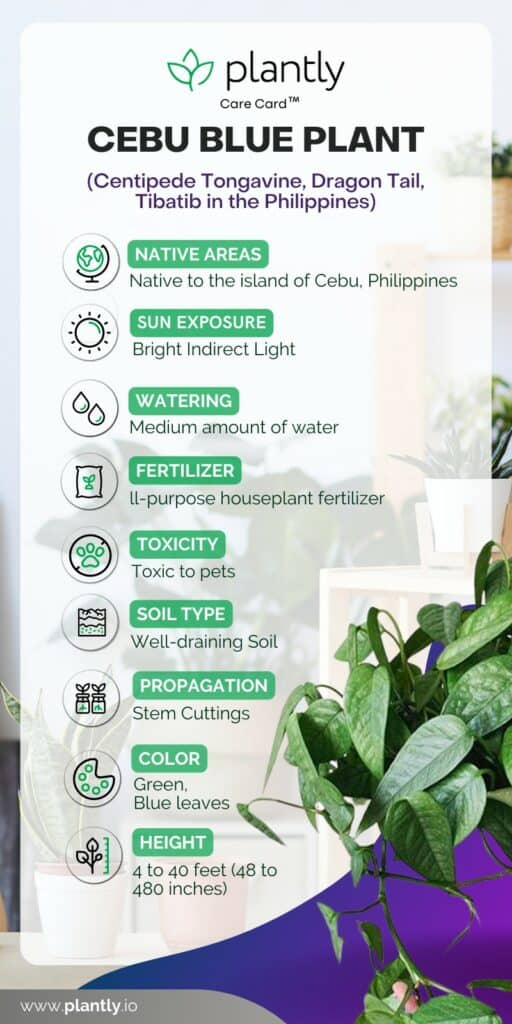
Cebu Blue Plant Care Basics
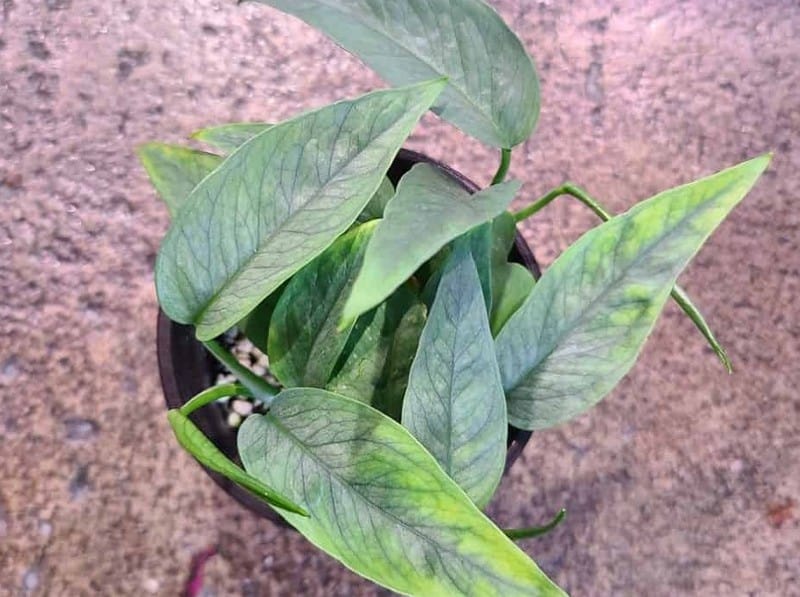 Before we go to the most important part, let me introduce to you briefly the Cebu Blue plant. Here’s the overview of it:
Before we go to the most important part, let me introduce to you briefly the Cebu Blue plant. Here’s the overview of it:
Now that we’ve introduced you to Cebu Blue don’t end it with just meeting this beauty! Learn also how to take care of it properly so that it would flourish. Below we will give you tips about it. Enjoy!
You can never go wrong with a well-draining soil combo.
The Cebu Blue Pothos, like all Pothos kinds, requires a well-draining soil combination. To encourage Cebu Blue to grow and thrive, the soil mix should have a balanced pH. The pH balance in the soil should be checked and maintained between 6.1 and 7.8.
Perlite is an excellent addition to the Cebu Blue pothos’ soil mix. Perlite is a good choice since it improves the soil quality, allowing the plant to grow to its full potential. Vermiculite and orchid bark are two other materials that could be combined with the soil.
The Cebu Blue isn’t that picky when it comes to soil, but it does like a chunkier mixture.
Cebu blue watering needs
The “soak and dry” method of irrigation was preferred by the Cebu blue plant. This strategy requires that the plant be watered only after the soil has dried out. Give a good soak to the plant completely while watering it.
Place your finger into the topsoil and see if it’s moist and soggy to know how the Cebu blue soil feels. Remember that overwatering causes wet compacted soil, which can suffocate the roots. If you forget to water it once or twice, it will forgive you, but it will not forgive you if you overwater it.
You can look at the plant’s condition if you’re unsure when it’s time to water it. However! Do not wait until the plant begins to wither and the curled leaves appear.
Aside from that, your Cebu Blue pothos will thrive if you give them the appropriate amount of water and water it at the right time.
Lighting

The Cebu Blue pothos care requires bright indirect light for the plant to thrive well. The Cebu Blue, on the other hand, is not as tolerant of low light as some other Pothos plants. Your plant will benefit from the bright light provided by Northern-facing windows without the risk of scorching the foliage.
Early morning sunshine in an Eastern-facing window would also be good, as it would avoid the harsh afternoon sun. If you want to cultivate a Cebu Blue outside, do it in the shade or beneath a tree, as direct sunlight will damage its delicate leaves.
Cebu Blue is a woodland plant by nature. The plant must obtain all demands and a comfortable sensation similar to what it receives from its natural habitat.
Temperature & Humidity
The Cebu Blue isn’t fussy with temperature requirements. Still, you should prevent drastic temperature changes and keep them away from drafty windows, doors, and vents. This beauty also prefers many types of household temperatures.
The Pothos themselves can also withstand standard room temperatures. If you’re comfortable in that room, the Cebu Blue also will. Maintain the warm temperature where the pothos Cebu blue was planted, and it will thrive there.
It is essential to note that the Epipremnum Pinnatum Cebu blue is not that picky regarding the humidity level. However, it is advantageous if you can enhance humidity because it will benefit your plants.
The Cebu Blue pothos prefers humidity levels of about 70% for the best thriving conditions.

You might mist the plant to raise the humidity level if you were having trouble keeping the humidity levels required by the plant stable. A pebble tray can also be used to hold the plant.
How much fertilizer do they need?
During the growing years of a Cebu Blue, fertilizing is vital. You may feed your Cebu a well-balanced general-purpose indoor plant fertilizer to help it thrive during the growing process. However, you won’t need to fertilize these plants often because they are such good growers on their own.
If you don’t want to use any synthetic fertilizers, on the other hand, you can apply organic fertilizer instead. This is a natural method to encourage natural growth for the plant.
Cebu blue propagation
The Cebu Blue pothos plant is one of the easiest Pothos plants to propagate. Propagate it using the stem cutting method, and it will indeed survive. Just take care of it efficiently also, and it will give you back your efforts.
Here is the process of propagating the plant:
Pro tip: Plants should be propagated in the spring or as soon as the weather begins to warm up. The plant’s growing seasons are the warm months. Planting the Cebu Blue Pothos during the winter months will not be successful.
- For the most excellent results, select a few of the mother plant’s healthy stems.
- Make a small, precise cut at the stem’s base and underneath a node.
- To guarantee that no leaves are immersed, remove some of the leaves at the base of these cuttings.
- Prepare a small pot of fresh soil with the same elements as your mother plant.
- With your finger, make a swell in the soil and carefully lay the stems within.
- To keep the stems in place, gently pat the soil around them.
- Gently water your cuttings and set them aside.
- Place the pot in a well-lit part of the house, preferably near a window. You can also cover them with a clear plastic bag to keep them warm during this time.
- Keep an eye on your cuttings and water them as needed. In a few weeks, you will then see the thrive given the appropriate care.
Growth Zone
In USDA hardiness zones 9-11, Epipremnum pinnatum are hardy and can somehow survive the winter.
Potting our gorgeous Cebu blue
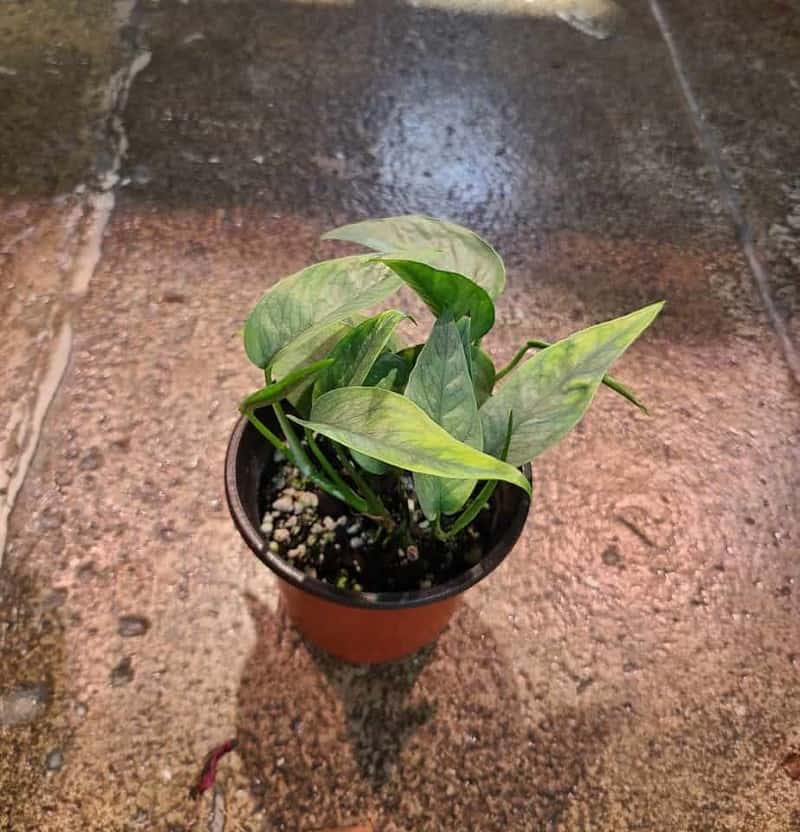
You’ll probably need to repot your Cebu blue pothos every 2 to 3 years, depending on how quickly it grows. When you observe roots poking out of drainage holes, you’ll know it’s time. This is a clear indication that it needs a larger container.
You must carefully select the appropriate pot for the plant before planting it. It means that if you want your Cebu Blue pothos to mature fast, a hanging basket will keep the plant in its juvenile stage for longer.
According to Gardener’s World, this pothos species is one of the best choices for a trailing house plant display. To keep the vines from climbing too far, this outdoor plant should be supported.
Pruning
Although the Cebu Blue pothos plant does not require severe pruning, it is beneficial to prune any vines that have grown too long or lanky. For it might produce a more extensive, bushier plant. Snip slightly above a node where the roots and leaves sprout out of the stem to encourage new development.
You should also remove any dead or decaying leaves whenever they may be plucked away. Similarly, if the plant is not pruned, it will appear untidy, with leaves overlapping and growing all over the place. However, the plant’s primary attractiveness is its leaves.
As a result, if you find that the stems are taking over, it’s definitely time to prune.
Cebu Blue Varieties and Similar Plants
Such beauty is this Cebu Blue, isn’t it? But what if there are many out there that look like this beauty? Well, don’t just leave yet. We will provide you with some of those out of the 12 species of Pothos plants!
Here are some examples of pothos species or varieties that have a bit of similarity to the Cebu blue:
Golden Pothos
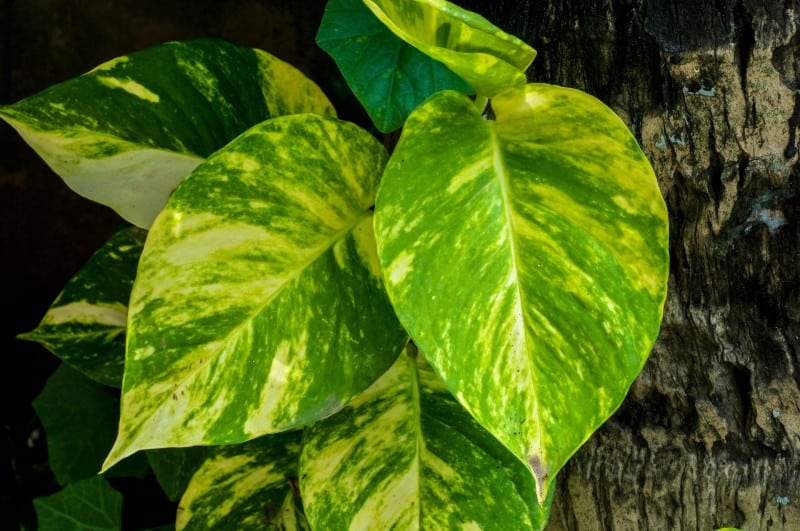
It’s a climbing vine with a lot of yellow-marbled foliage. It climbs tree trunks by aerial roots and tumbles along the ground as a cover in its native habitat. It also reaches a length of 40 feet or more.
Marble Queen Pothos
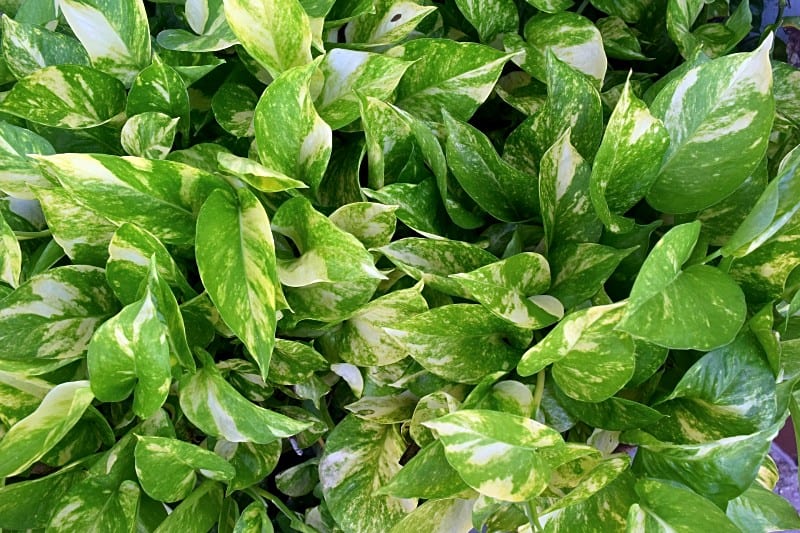
Another common pothos type is the Marble. It has heart-shaped green leaves, richly splashed and striped with creamy white.
Pearls and Jade Pothos
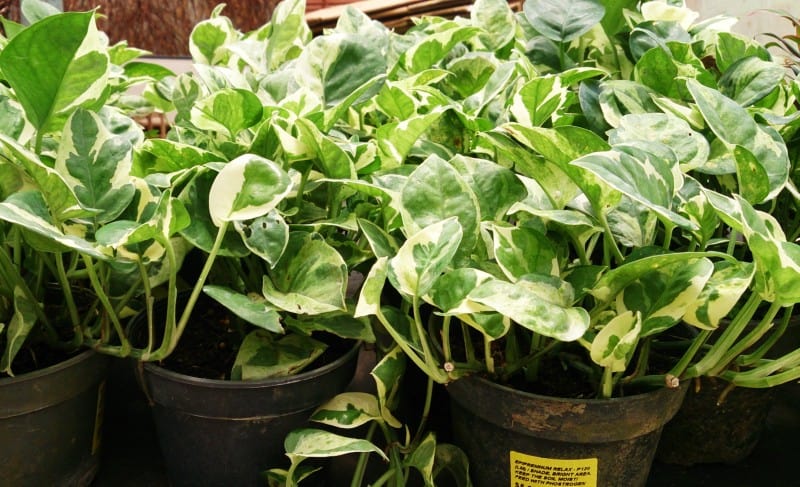
Pears and Jade pothos has attractive green leaves that are mottled with white and silvery-gray. The variegation appears on the edges of the leaves rather than in the center. Pearls and Jade pothos have smaller leaves and develop more slowly than some of the other types.
Cebu Blue Diseases & Pests
Diseases and pests are surely inevitable to our plant life. That is why learning about these attackers might give us some hints on how to extinguish them. Here are some of those:
Mealybugs and Scales
Every Cebu blue lover’s biggest nightmare is mealybugs and scales. When these pests infest the Cebu Blue pothos, it is not spared; removing them may be painful for the plant. The other plants that the mealybugs and scales previously attacked are the source of the epidemics.
As a result, infested plants should be isolated for a week or two to remove all pests.
Use a cotton bud with some insecticidal soap and physically remove these pests to immediately get rid of these diseased regions. After that, water the plant gently with a hose spray and quarantine it for a few days until they’re entirely gone.
Overwatering
If left waterlogged for an extended period, the Cebu Blue pothos will not attain their full potential. Cebu blue is a common plant that prefers to dry out a little before drinking again. The presence of damp, wet, droopy-looking leaves is one way to tell if the Pothos has been overwatered.
In addition, if your plant is overwatered, it is more susceptible to fungal and bacterial illnesses.
Frequently Asked Questions
The plant reaches “adulthood” at some mystical period. The once-complete leaf expands to up to 2 feet in diameter. It begins to divide, finally turning pinnate and resembling a palm frond with stout stalks
Cebu blue is a member of the Pothos variety, not of the Philodendron variety. The plant is part of the Epipremnum genus, which is where the pothos relationship comes from.
Because of the similar leaf structure, the adult Blue Cebu is occasionally confused with Monstera plants. On the other hand, the Monstera plants lack the rugged ridge that runs the length of the Cebu Plant’s stem. And that wholly distinguished this beauty from Monsteras
Lucky for you to be here! Yes, we offer Cebu Blue here at Plantly! We ensure that we have faster transactions online and will deliver your plant free from damages. Message us now!
Whether you want to buy, sell or simply reach out to other plant enthusiasts, Plantly is the right place to be!
In stock In stock In stock In stock
Free Shipping
$34.99
Sold By:
Aloha Hawaii Orchids
Dendrobium Sea Breeze Comes in 3″ Pot
Rated 4.65 out of 5 based on 268 customer ratings00
Sold By:
Aloha Hawaii Orchids
$14.95
Sold By:
Wonka Plants
Alocasia “Black Velvet”
Rated 4.94 out of 5 based on 108 customer ratings00
Sold By:
Wonka Plants
$25.30
Sold By:
Carlo's Plant Farm
Parsoni Juniper | Carlo`s Plant Farm
Rated 5.00 out of 5 based on 22 customer ratings00
Sold By:
Carlo's Plant Farm
$56.99
Sold By:
Succulent Oasis
Large Succulent Arrangement in a Tan Oval Designed Tin.
Only 6 available and it’s in 1 people’s basket Rated 4.84 out of 5 based on 352 customer ratings00
Sold By:
Succulent Oasis
